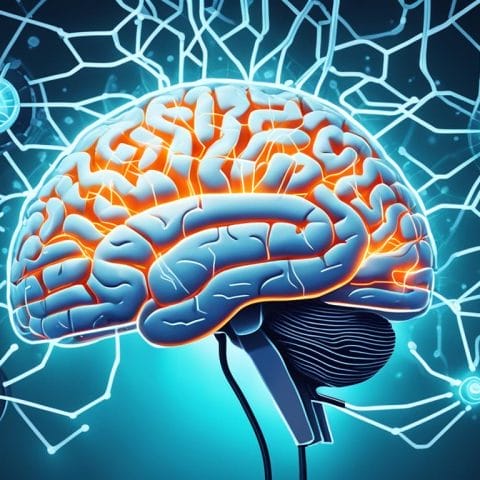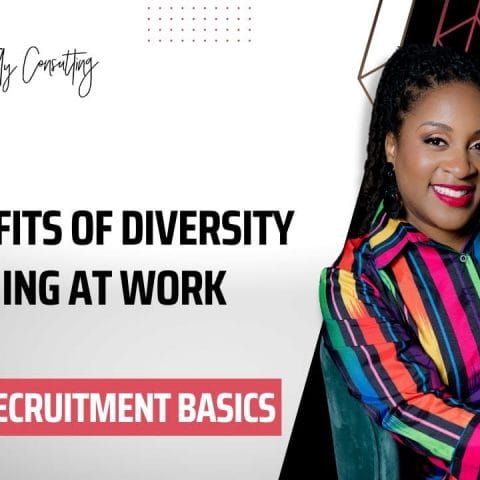In today’s fast-changing business world, teamwork skills are more important than ever. Hyperspace, a top name in metaverse tech, is changing how teams work together globally. They use virtual reality (VR) and artificial intelligence (AI) to make team building better, improve communication across cultures, and help teams work together from anywhere.
VR and AI create virtual worlds that mimic real-life situations. This lets teams practice working together in a safe space. Hyperspace’s AI adds features like smart avatars and gestures that make learning fun and effective.
Hyperspace’s AI VR tools help teams practice soft skills, learn at their own pace, and try out different roles. These tools are key for teams working remotely or across cultures. They help teams overcome language and cultural barriers, and manage time differences.
Key Takeaways
- Virtual reality and artificial intelligence are changing how teams work together, making learning more immersive and effective.
- Hyperspace’s AI solutions, like soft skills simulations and role-playing, help teams improve their collaboration skills.
- These tools tackle the challenges of remote and cross-cultural teams, like language and cultural differences, and time zones.
- Hyperspace’s metaverse tech helps companies build strong, effective global teams that succeed in today’s work environment.
- By using AI VR, companies can unlock new levels of teamwork, communication, and innovation worldwide.
Introduction to AI and VR in Collaboration

The world is getting more connected, making teamwork across the globe essential. New tech like Artificial Intelligence (AI) and Virtual Reality (VR) are changing how teams talk, work, and connect. This is true even when they are far apart.
Understanding AI and VR Technologies
AI is making virtual teamwork better by adding cool features. It includes real-time language translation, noise removal, and text from speech. VR, on the other hand, makes virtual team activities feel real. This includes solving puzzles and creative tasks, making everyone feel connected.
Importance of Collaboration Skills
Good teamwork skills are key for success. They help avoid mistakes, make work more enjoyable, and improve services. AI and VR help teams worldwide learn important skills. These include listening well, solving problems, and handling disagreements.
The Role of Global Teams
Global teams get a lot from immersive training simulations, global workforce integration, and multilingual virtual environments. AI and VR help teams feel connected, no matter where they are. This breaks down barriers and builds a strong team spirit.
“AI and VR are revolutionizing the way global teams collaborate, breaking down barriers and fostering a sense of unity across diverse workforces.”
Using AI and VR, companies can create amazing training experiences. These experiences help teams worldwide grow and succeed in today’s fast-changing business world.
Benefits of Using AI and VR for Collaboration

Artificial intelligence (AI) and virtual reality (VR) are changing how teams work together worldwide. These new tools help teams work better and feel more connected, no matter where they are.
Enhanced Communication and Interaction
AI makes talking to each other much easier. It uses smart chatbots and translation to help teams talk across languages. It also helps managers understand how well teams are working together.
Simulating Real-World Scenarios
VR lets teams practice in a safe, virtual space. They can work on big projects, test emergency plans, and try out designs without risk. It’s a big help in many fields, from building to cars.
Overcoming Geographic Barriers
AI and VR help teams work together, no matter where they are. VR makes it feel like you’re right there with your team. AI helps translate and transcribe, so everyone can understand each other.
Using geographically distributed teamwork, virtual reality collaboration, and artificial intelligence facilitation opens up new possibilities. Teams can be more productive, creative, and connected. As these technologies get better, teamwork will keep getting better too.
“AI and VR are paving the way for a future where teams can collaborate effortlessly, regardless of physical location. The possibilities for enhanced communication, realistic simulations, and overcoming geographic barriers are truly game-changing.”
Key Challenges in Global Team Collaboration
Organizations are using global teams more and more. But, they face unique challenges that can slow down work. AI and VR can help solve these problems.
Cultural Differences
Cultural differences can cause misunderstandings and conflicts. AI-powered cultural sensitivity training in VR can help. It makes team members more aware and understanding of each other.
These tools use real-world scenarios and give feedback. They help teams work better together, no matter their background.
Time Zone Issues
Working together when everyone is in different time zones is hard. AI-powered scheduling tools and VR platforms help. They make it easier for teams to meet and work together, no matter where they are.
Language Barriers
Language barriers can make communication tough. Real-time AI translation services in tools can help. They make talking in different languages easy.
VR also helps by adding non-verbal cues and context. This makes understanding and working together better across cultures.
Using AI and VR smartly can make global teams more effective. It helps with communication, building teams, and working in different languages. This makes work better for everyone.
“Embracing AI and VR technologies can unlock a new era of global collaboration, where diverse teams can thrive and achieve remarkable results.”
Developing Collaboration Skills through AI VR Training
Virtual reality (VR) and artificial intelligence (AI) are changing how teams work together. These technologies make learning hands-on and better than old ways. They help teams talk better, solve problems, and work together more effectively.
Immersive Learning Experiences
VR training puts team members in real-life scenarios. They learn to work together in a safe, virtual space. This way, they get to practice important skills in a fun and memorable way.
Real-Time Feedback Mechanisms
AI helps VR training by giving feedback right away. It looks at how teams work together and how each person contributes. This helps teams get better and improve their skills fast.
Customized Training Solutions
VR training can be tailored to fit each team’s needs. It uses AI to give feedback that’s just right for them. This makes sure teams get the training they need to work better together.
By using VR and AI together, teams can reach their full strength. This creates a place where everyone can work well together and come up with new ideas.
| Benefits of AI VR Training for Collaboration | Key Statistics |
|---|---|
|
|
“VR training offers benefits such as increased engagement, practical skill development, improved retention rates, and cost-effective solutions.”
Tools for AI and VR Collaboration
In today’s world, new tech like virtual reality (VR) and artificial intelligence change how teams work together. No matter where they are, teams can now work together smoothly. They can talk, share ideas, and do projects as if they were all in one place.
VR Platforms and Software
VR platforms like Spatial and Microsoft Mesh make virtual meeting spaces. They let teams interact, share ideas, and work on projects online. These tools use advanced tech to make virtual work feel real and productive.
AI-Powered Communication Tools
AI tools like Otter.ai for transcription and Grammarly for writing help teams talk better. They make sure everyone gets the message and documents are clear. These tools cut down on language problems and help teams work better together.
Integration with Project Management Solutions
Project management tools like Monday.com and Asana now use AI and VR. This lets teams see tasks, work together, and stay on track. Even when they’re far apart, these tools help teams work together well.
AI and VR help global teams work better together. They solve problems of working from different places. These tools make teamwork easier, help teams talk and work together, and make projects run smoothly.
Case Studies of Successful Implementation
AI and VR are changing how we work together. They are used in many places, like companies, schools, and charities. These tools help teams work better and talk across cultures.
Corporate Training Programs
Walmart uses VR to train employees. This has made them better at their jobs and keeps them longer. They are more confident and calm when dealing with tough customers.
GE Healthcare also uses VR for training. It helps doctors make quicker decisions with real scans. This shows how VR can improve skills in many areas.
Educational Institutions
Stanford University uses VR labs for research and learning. Students who use VR do better in surgeries. They learn more and do more steps than others.
VR can make learning fun. This makes students more motivated. It shows how AI and VR can help in education.
Non-Profit Organizations
The Red Cross uses VR for disaster training. It helps teams work better in emergencies. Varjo’s VR training for Boeing’s Starliner crew shows VR’s role in space missions.
These examples show how AI and VR help teams work better. They are used in many places for different goals.
| Organization | Use Case | Key Outcomes |
|---|---|---|
| Walmart | Employee Training | Improved performance and retention |
| GE Healthcare | Radiology Training | Quicker and more frequent training, better decision-making |
| Stanford University | Collaborative Research and Learning | 233% higher scores and 252% more steps for surgical training |
| The Red Cross | Disaster Response Training | Enhanced team coordination in crisis situations |
| Boeing Starliner | Flight-test Crew Training | Innovative training methods for space mission success |
AI and VR are changing how we work together. They are used in many places. They help teams work better and talk across cultures.
Measuring the Impact of AI VR on Collaboration Skills
To really understand how AI and VR change teamwork, we need to look at many things. We can use key performance indicators (KPIs), hear what people say, and see how teams work over time. This way, we can see how these new tools change how teams work together around the world.
Key Performance Indicators
It’s important to track KPIs to see the good things AI VR does for teamwork. Things like how fast teams finish projects, how well they talk to each other, and how quickly they solve problems. For example, PTC saw a 30% jump in brainstorming speed, and IBM’s productivity and innovation went up by 20% with VR.
Participant Feedback and Surveys
It’s also key to listen to what people say about using AI VR. Surveys and talks can give us deep insights into how users feel and how well they think AI VR works. Accenture’s team-building exercises, for instance, made employees 50% more engaged, and Cedars-Sinai Medical Center saw a 60% boost in confidence after VR training.
Long-Term Effects on Team Dynamics
The real test of AI VR is how it changes teams over time. Signs of better teamwork, more ideas, and understanding between different cultures show its lasting impact. IBM’s global team, for example, was 20% more productive and innovative after using VR to work better together despite cultural differences.
By looking at all these different data points, we can really see how AI VR changes teamwork. This way, we can keep making teamwork better and get the most out of these new tools.
| Company | Metric | Improvement |
|---|---|---|
| PTC | Brainstorming Efficiency | 30% increase |
| Accenture | Employee Engagement | 50% increase |
| IBM | Productivity and Innovation | 20% increase |
| IBM | Collaboration Efficiency | 30% increase |
| IBM | Retention Rate | 70% higher |
| Unbox Robotics | Project Efficiency | 30% increase |
| Unbox Robotics | Miscommunications | 50% reduction |
| PwC | Learning Retention | 76% increase |
| Walmart | Employee Efficiency | 30% increase |
| Cedars-Sinai | Trainee Confidence | 60% increase |
| Buffer | Employee Engagement | 35% increase |
Future Trends in AI and VR Collaboration
The world is changing fast, and so is how we work together. Artificial Intelligence (AI) and Virtual Reality (VR) are leading the way. They promise to break down barriers and connect us like never before.
Emerging Technologies to Watch
Immersive training simulations are becoming a big deal. With VR users set to hit 171 million by 2024, companies are using these tools to train better. They make learning fun and real, helping us understand complex tasks.
AI is also making emotional intelligence training more common. This helps teams get along better, no matter where they are. Brain-computer interfaces are another exciting area, making virtual communication smoother than ever.
Predictions for Teamwork Evolution
AI and VR are changing team structures. Soon, teams will work together easily, no matter where they are. These technologies will help us develop important soft skills, making global teams more effective.
The Role of Remote Work in Future Collaboration
Remote work is on the rise, and AI and VR are making it better. Virtual meetings will feel more real, thanks to AI. This new way of working will keep us productive, creative, and connected worldwide.
“The future of collaboration is not just about technology, but about empowering people to work together in innovative and engaging ways, transcending the boundaries of time and space.”
Conclusion: Embracing AI VR for Better Collaboration
This article shows how virtual reality (VR) and artificial intelligence (AI) change team work. They help teams talk better, understand each other more, and learn new skills. By using these new tools, companies can make communication better and help their teams grow.
Summarizing the Benefits
VR collaboration tools are better than old video calls. They make team meetings more fun and real. With AI, like better sound and lifelike avatars, teams can talk smoothly and feel closer, even when they’re far apart.
Call to Action for Teams
As more people work from home, teams need to try VR and AI. These tools help teams work together better, no matter where they are. They help teams get past language and cultural barriers and learn new skills.
Final Thoughts on Future Collaborations
The future of working together will mix real and virtual meetings. AI and VR will be key in making teams work well together, no matter where they are. Companies that start using these tools now will be ready for the changing work world. They will be more productive, creative, and understanding of different cultures.
FAQ
Q: What is the role of AI and VR in improving teamwork for global teams?
A: AI and VR are changing how teams work together across the globe. They create virtual spaces that help teams overcome distance, language, and cultural barriers. These tools make communication better, training more realistic, and teamwork smoother.
Q: What are the main advantages of using AI and VR for teamwork?
A: Using AI and VR improves how teams talk and work together. They let teams practice in real-world scenarios and work together from anywhere. AI also helps with language and smart data analysis, making teamwork better for teams spread out worldwide.
Q: How do AI and VR solve problems faced by global teams?
A: AI and VR tackle challenges like cultural and language differences, and time zones. They offer training on cultural sensitivity, scheduling tools, and real-time translation. This makes teamwork more inclusive and efficient for teams from different places.
Q: What kinds of AI and VR tools are there for better teamwork?
A: There are many tools, like VR platforms for virtual meetings and AI for better communication. There are also project management tools with AI and VR features. These tools help teams work together smoothly from anywhere.
Q: How can we measure the effect of AI and VR on teamwork?
A: We track things like how fast teams finish projects and how well they communicate. Feedback from team members and surveys help too. AI can analyze this data to show how teamwork improves.
Q: What’s next for AI and VR in teamwork?
A: Future advancements include better haptic feedback and AI for emotional intelligence. We’ll also see more virtual and real-world collaboration. Teams will become more flexible, and AI will play a bigger role in teamwork, with remote work becoming even more common.





